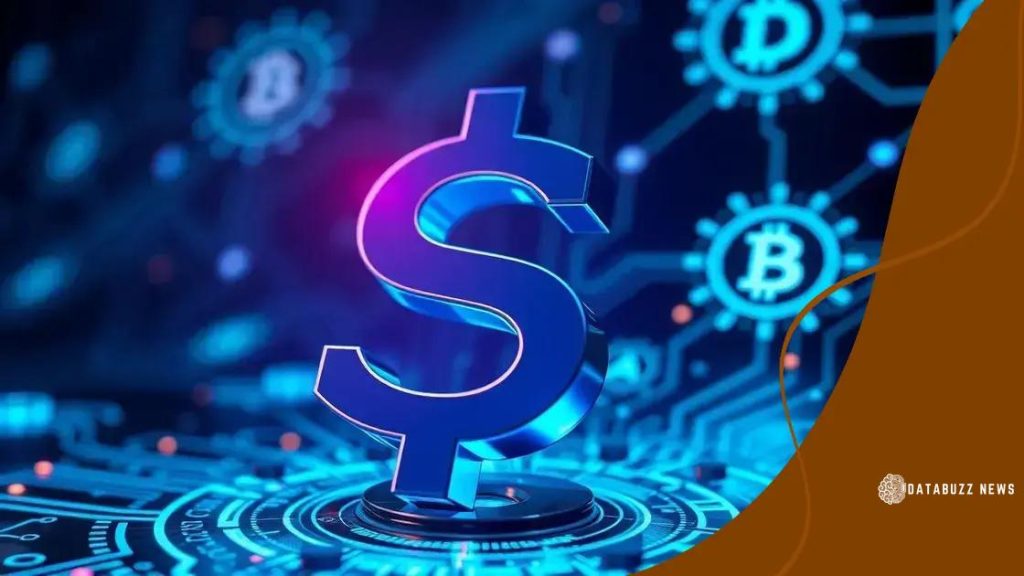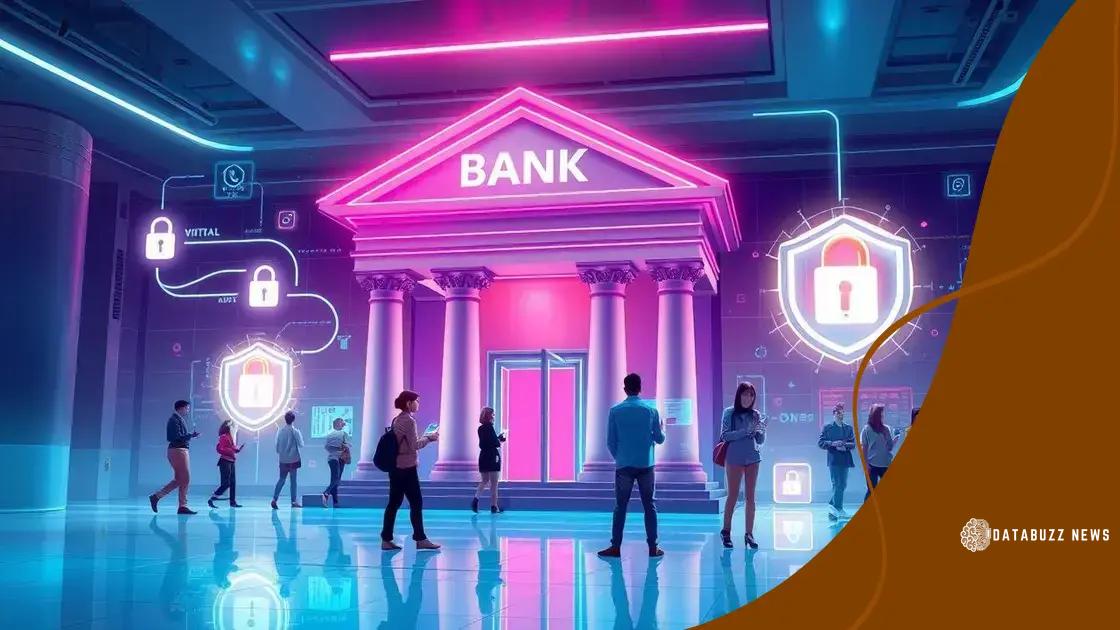Digital dollar pilot program developments: what’s next?

The digital dollar pilot program is a developmental initiative exploring a digital currency issued by central banks, aiming to enhance transaction efficiency, reduce costs, and improve financial inclusion while facing challenges like privacy, security, and regulatory adaptation.
Digital dollar pilot program developments are making waves in the financial world. As we dive deeper into this topic, what do these advancements really mean for you and the economy?
Understanding the digital dollar concept
The digital dollar is an innovative concept that represents the future of currency. It is designed to work alongside traditional money but in a completely digital format. This new form of currency is not just an idea; it’s being actively developed and tested in various pilot programs.
One of the most fascinating aspects of the digital dollar is how it could reshape our economy. Central banks are exploring this digital currency to help streamline payments and potentially lower transaction costs. Some benefits include:
Benefits of a Digital Dollar
- Immediate transactions without intermediaries.
- Enhanced security and reduced fraud risk.
- Increased transparency in transactions.
- Access to banking services for unbanked populations.
The digital dollar concept aims to improve the efficiency of financial systems worldwide while maintaining user privacy. Consumers could enjoy seamless transactions, less reliance on cash, and more control over their financial data.
However, there are challenges to overcome. For instance, regulatory concerns about privacy and security are pressing issues that need to be addressed. Additionally, the impact of this digital currency on traditional banking must be closely examined. How will banks adapt to this change? Will they integrate the digital dollar or resist it?
As discussions around the digital dollar continue, more people are becoming interested in how it will affect their daily lives. With digital payments becoming more prevalent, understanding this concept will help consumers prepare for the future. Overall, the digital dollar represents a significant shift in how we think about money and transactions.
Key developments in the digital dollar pilot program
The digital dollar pilot program has seen several important developments that are shaping its future. These advancements are crucial for determining how effective and widely adopted the digital dollar can become.
Recently, numerous central banks have initiated trials to explore the technical and operational aspects of the digital dollar. These trials help identify the potential benefits and drawbacks of implementing such a system. One key development is the collaboration between banks and tech companies to enhance the infrastructure for a digital currency. This collaboration aims to ensure security and efficiency while using advanced technology.
Recent Pilot Program Highlights
- Partnerships with major tech firms to improve user experience.
- Testing of blockchain technology for transaction monitoring.
- Public feedback sessions to gauge consumer interest.
- Simulation of real-world scenarios to identify risks and solutions.
In addition to technological advancements, regulatory frameworks are also being discussed. This ensures that the new system complies with existing laws and addresses privacy concerns. The Federal Reserve and other authorities are working closely with stakeholders to create guidelines that protect consumers while facilitating innovation.
The implications of these pilot programs are significant. They may lead to changes in how we perceive money and transactions in the digital age. As central banks refine their approaches, they consider how best to implement the digital dollar in a way that boosts the economy and meets public needs. With each pilot program, we gain valuable insights into how a digital dollar may function effectively alongside traditional currencies.
Impacts on banking and finance

The introduction of the digital dollar will have profound impacts on banking and finance. As this new currency takes shape, it will change how we engage with money and financial institutions. Understanding these changes is essential for consumers and businesses alike.
The role of banks will evolve in response to the digital dollar. Financial institutions may need to adapt by developing new services tailored to digital transactions. This could include mobile banking applications that support faster payments and enhanced user experiences. Customers might also enjoy lower fees due to the more efficient processing of digital transactions.
Key Impacts on the Banking Sector
- Increased competition with fintech companies offering innovative solutions.
- The potential reduction of traditional banking roles as transactions become more digital.
- Enhanced focus on cybersecurity to protect digital assets.
- New opportunities for customer engagement through digital platforms.
Moreover, the financial industry will likely see a shift in regulatory practices. With the emergence of digital currencies, regulators will need to update laws and guidelines to ensure consumer protection and prevent financial crime. This change can lead to a more structured environment for banks and consumers.
Another critical impact will be on cross-border payments. The digital dollar could simplify international transactions, enabling consumers and businesses to transfer funds quickly and cost-effectively. As digital currencies gain acceptance, global trade might become even more seamless, impacting economic relationships between countries.
However, the transition to a digital dollar won’t be without challenges. Traditional banks will have to navigate a rapidly changing landscape where trust and security become even more critical. Consumers must also adapt to this new way of handling money, learning to embrace digital tools while being aware of potential risks like fraud.
Challenges faced during implementation
The implementation of the digital dollar is not without challenges. As central banks explore this innovative concept, they encounter various hurdles that could affect its success and adoption. Understanding these challenges is key for stakeholders involved in the program.
One significant challenge is the issue of privacy. Many consumers are concerned about how their data will be used and monitored. Ensuring robust privacy protections while maintaining transparency is a balancing act that authorities must navigate. Trust will play a critical role in consumer acceptance of digital currencies.
Major Implementation Challenges
- Establishing regulatory frameworks that keep pace with technology.
- Ensuring cybersecurity to protect against hacks and fraud.
- Overcoming public resistance to change and unfamiliarity with digital currencies.
- Integrating with existing financial systems without causing disruptions.
Another challenge lies in financial inclusion. While the digital dollar has the potential to enhance access to financial services, there is a risk that some populations may be left behind. People without internet access or those not familiar with technology may not benefit from the digital dollar. Stakeholders must ensure that all communities can engage in this new financial landscape.
Moreover, the need for technical infrastructure is critical for successful implementation. Central banks and technology partners must collaborate to develop secure, efficient systems. This requires significant investment and innovation to ensure systems can handle increased transaction volumes. Additionally, ongoing maintenance and updates will be crucial to keep the systems functional and secure.
The complexity of international regulations also poses a challenge. Different countries have varying regulations regarding digital currencies, which can complicate cross-border transactions. Harmonizing these rules will be necessary for the smooth operation of the digital dollar globally.
Future outlook for the digital dollar
The future outlook for the digital dollar appears promising as more countries explore its potential benefits. With advancements in technology and increasing public interest, the digital dollar could soon become a reality in many economies. These developments promise to reshape how we think about money and transactions.
As central banks continue to conduct pilot programs, they are gaining valuable insights into how a digital dollar might function. Feedback from these trials will help refine the digital currency’s design and implementation, ensuring it meets the needs of consumers and businesses. The major focus will be on enhancing efficiency and reducing transaction costs, which could lead to a more inclusive financial system.
Key Trends to Watch
- Growing adoption of digital currencies worldwide.
- Increased collaboration between governments and tech companies.
- Emerging regulatory frameworks to support digital currency use.
- Potential integration with existing financial systems.
The integration of the digital dollar has the potential to revolutionize financial interactions. For instance, it could streamline cross-border transactions, making them faster and cheaper. This change may enhance global trade by simplifying payment processes. Moreover, the demand for real-time payments will likely rise, pushing traditional banks to adapt their services to remain competitive.
However, uncertainties exist about its long-term impact, particularly regarding privacy and data security. Governments and financial institutions must prioritize these issues to build consumer trust. The dialogue surrounding digital currencies will need to continue, addressing concerns while promoting the benefits. Future adjustments and updates will be necessary to accommodate evolving technology and user expectations.
Ultimately, the journey toward a digital dollar will be shaped by both consumer acceptance and regulatory advancements. How governments respond to these changes will influence the trajectory of digital currencies globally.
FAQ – Frequently Asked Questions about the Digital Dollar
What is the digital dollar?
The digital dollar is a digital version of currency issued by central banks, designed to facilitate electronic transactions and improve payment efficiency.
What are the benefits of a digital dollar?
Benefits include faster transactions, lower costs, improved accessibility for unbanked populations, and enhanced security against fraud.
What challenges does the digital dollar face?
Challenges include privacy concerns, cybersecurity threats, regulatory hurdles, and ensuring inclusivity for all users.
How will the digital dollar impact banking?
The digital dollar will likely lead to increased competition and innovation among banks, forcing them to adapt their services and improve customer experiences.
